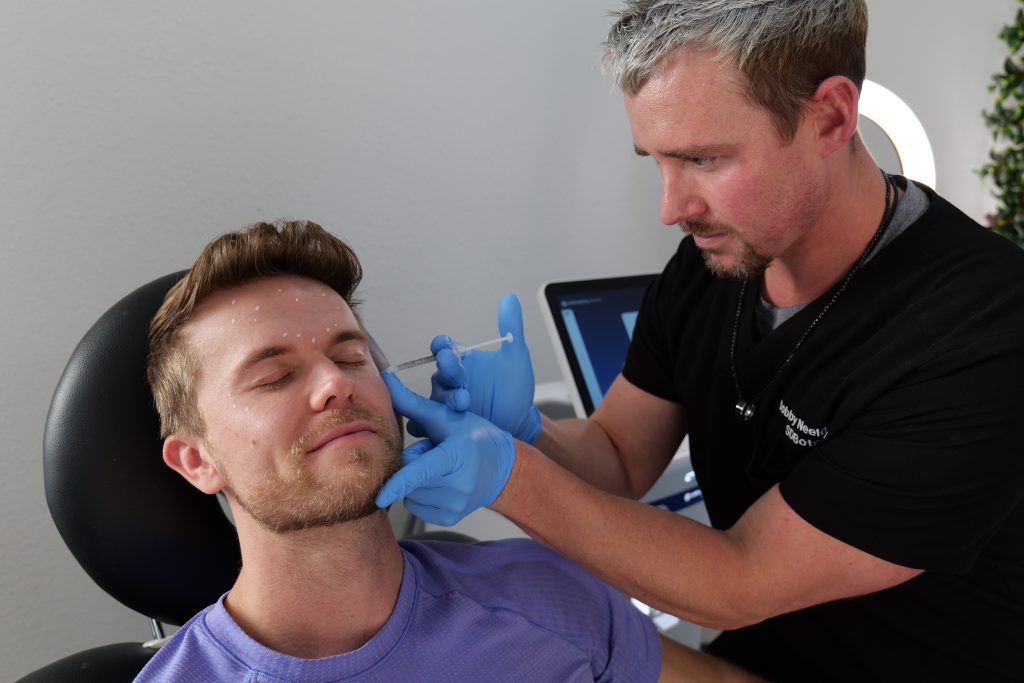Botox, also known as botulinum toxin, is widely recognized for its cosmetic applications. Beyond smoothing wrinkles, Botox demonstrates significant therapeutic benefits, particularly in managing muscle spasms. Here is more information on how Botox works for muscle spasms, its benefits, and the conditions it commonly addresses:
Relieving Muscle Spasms
Botox is a neuromodulator that interrupts communication between nerves and muscles. It does this by blocking the release of acetylcholine, a chemical that signals muscles to contract. When injected into a specific muscle, Botox reduces excessive muscle activity, causing the targeted area to relax and soften. This makes it widely used for both medical and cosmetic purposes.
The effects of Botox injections are temporary, lasting around three to four months, depending on individual response. Regular treatment may help maintain relief over time and improve long-term results. Due to its targeted action, Botox minimizes the impact on surrounding muscles, making it an effective and precise choice for localized spasms or wrinkles.
Understanding Botox
Botox provides relief for individuals experiencing chronic or recurring spasms that disrupt daily life. One significant benefit is pain reduction, as persistent spasms often lead to discomfort or even severe pain. Relaxing the affected muscles can improve mobility and enhance overall function.
Another advantage is the localized nature of the treatment. Botox delivers immediate relief to specific problem areas without affecting broader muscle groups. This precision makes it suitable for individuals who need focused treatment, such as those with dystonia or contractures.
Botox offers an alternative for patients unresponsive to oral medications or physical therapy. Unlike systemic drugs, localized effects reduce the likelihood of side effects impacting other parts of the body. This makes it a viable option for long-term management of muscle conditions.
Exploring Common Conditions
Healthcare providers frequently use Botox to address various conditions involving muscle spasms. One condition is cervical dystonia, which causes involuntary neck muscle contractions. Botox helps reduce pain and irregular head movements in patients with this disorder. It also helps improve quality of life by providing relief from discomfort and restoring more natural movement patterns.
Spasticity, often observed in individuals with neurological conditions such as cerebral palsy or multiple sclerosis, is another area where these injections prove effective. The treatment can relax spastic muscles in the arms, legs, or other parts of the body, improving movement and posture. This allows patients to perform everyday tasks with greater ease and independence. Botox is also beneficial for blepharospasm, a condition causing uncontrollable eyelid twitching.
Find a Neurology Clinic
Botox serves as an effective and targeted treatment for muscle spasms, offering both pain relief and improved functionality. By reducing excessive muscle activity through controlled injections, it benefits individuals with conditions such as cervical dystonia, spasticity, and blepharospasm. Its localized effects and low risk of systemic side effects make it a valuable option for managing spasms when other treatments fall short. For individuals seeking a method to control persistent muscle spasms, discussing the potential of these injections with a healthcare provider may provide a path to relief and an improved quality of life.

